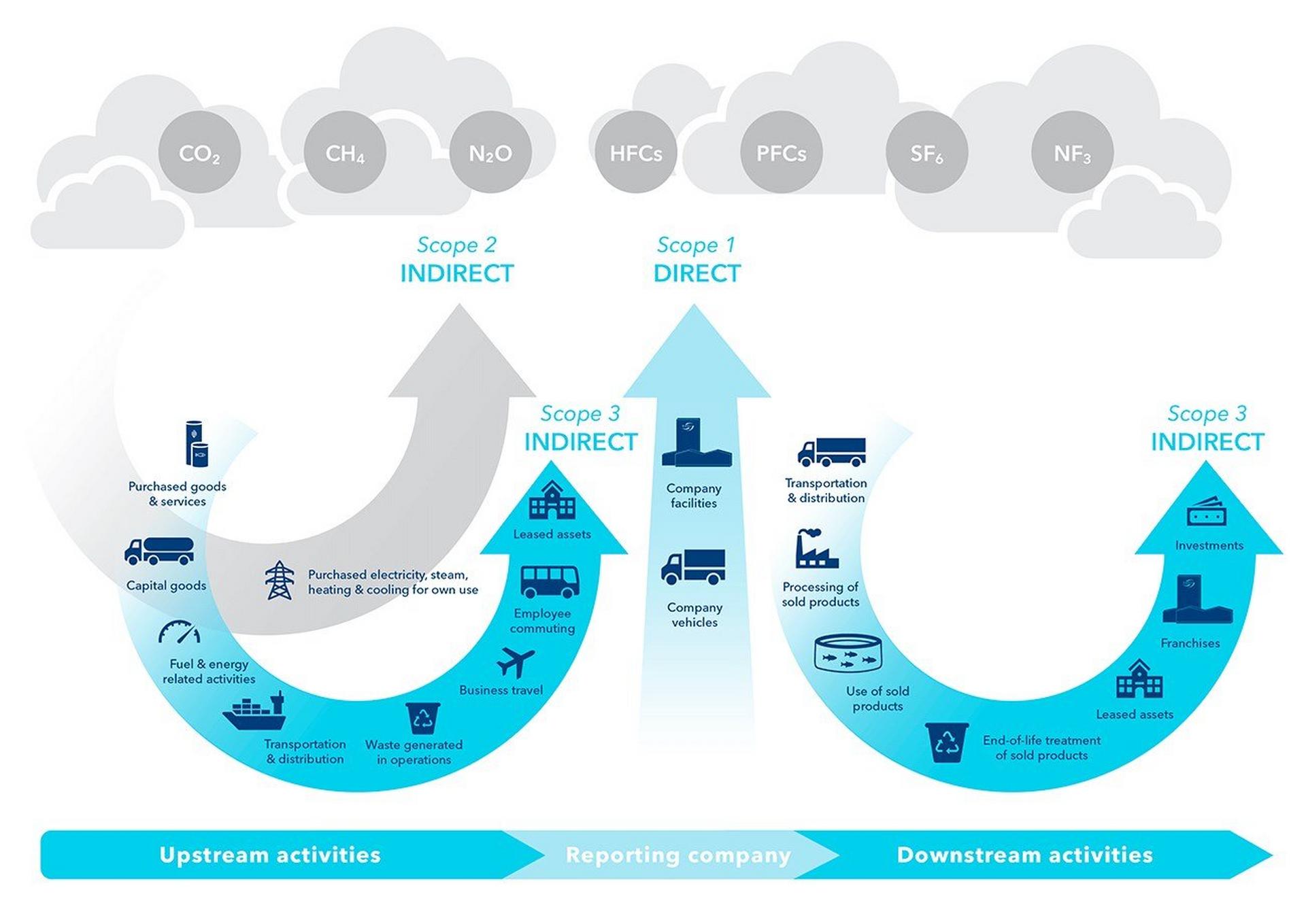Scope 1, 2 & 3: Going “net-zero”
Since the Industrial Revolution, humans have been responsible for over 2,000 gigatons of carbon dioxide emissions. Greenhouse gases (GHGs) such as carbon dioxide, trap heat and, with increased atmospheric concentrations, cause the global warming we are experiencing today. The only way to avoid these consequences is simple: reduce global GHG emissions.
According to the International Panel on Climate Change, emissions need to halve by 2030 and, most importantly, reach “net-zero” by 2050 to avoid the worst climate impacts. This is in line with warming that is at or below 1.5 °C of pre-industrial levels. But what does “net-zero” mean and how do we reach it?
With 1.5 °C of warming being a global target, many companies, institutions and governments are making ambitious plans towards a 2050 net-zero goal (UN, 2020). On the surface, the concept of net-zero emissions is simple: all human-caused GHGs emitted to the atmosphere are balanced by removing GHGs from the atmosphere. This should be achieved by first reducing fossil fuel combustion to as close to zero as possible, with the remaining emissions being removed from the atmosphere by e.g., carbon capture and storage or forest restoration.
Despite its conceptual simplicity, research has shown how differing definitions and pathways to net zero can lead to drastically different results. For example, the time-frame for achieving net-zero emissions varies if the strategy refers to just carbon dioxide or includes all GHGs. The non-carbon dioxide GHGs, such as nitrous oxide and methane, are more difficult to reduce, however, and are substantially more potent for short-term warming. If unchecked, this could lead to humanity breaching the 1.5 °C threshold before 2050.8, 9
Due to this, it is important that companies, governments and other agencies develop net-zero targets using a science-backed methodology that leads to substantiated and meaningful reductions.

Reducing Scope 1, 2 & 3 GHG Emissions
To develop a net zero strategy, a first and crucial step is to track, quantify and validate all GHG emissions against a robust standard, such as the GHG Protocol. For this accounting process, GHG emissions are grouped into 3 categories: Scope 1, 2 and 3 emissions (see figure). From a business’s perspective, scope 1 emissions includes all direct emissions from owned or controlled sources, such as fuel combustion and company vehicles. Scope 2 emissions includes all indirect GHG emissions related to the generation of purchased electricity, heat and steam, while scope 3 emissions covers all other indirect emissions that occur in a company’s supply chain, e.g. raw material production and business travel.
Due to their varying sources, tackling a company’s scope 1, 2 and 3 emissions requires a wide variety of approaches, that are validated using frameworks such as the Science-based Targets Initiative (SBTi). Reducing scope 1 emissions can be achieved by phasing out and reducing fossil fuel use through, e.g., electrifying operations. Scope 2 emissions are best reduced by optimising & increasing energy efficiency as well as sourcing purchased electricity, heat and steam from renewable energy sources, such as wind, hydro power or nuclear power.
Scope 3 emissions, while often consisting of the vast majority of a company’s emissions, are more difficult to control due to their occurrence deep within global supply chains. Therefore, scope 3 strategies must target supply-chain actors, such as suppliers and customers, to help achieve carbon reductions within their operations. In the aquafeed industry, this includes working with suppliers to halt deforestation, restore degraded lands, and de-carbonize, whilst also engaging with customers and retail to improve food production efficiencies and reduce food loss.
Once emissions are reduced to the greatest extent possible, the remaining GHG emissions are removed from the atmosphere using either land-based (e.g. reforestation, enhancing soil carbon and biochar) and/or technological approaches (e.g. direct air capture, ocean alkalinity enhancement and converting carbon dioxide into durable carbon).
